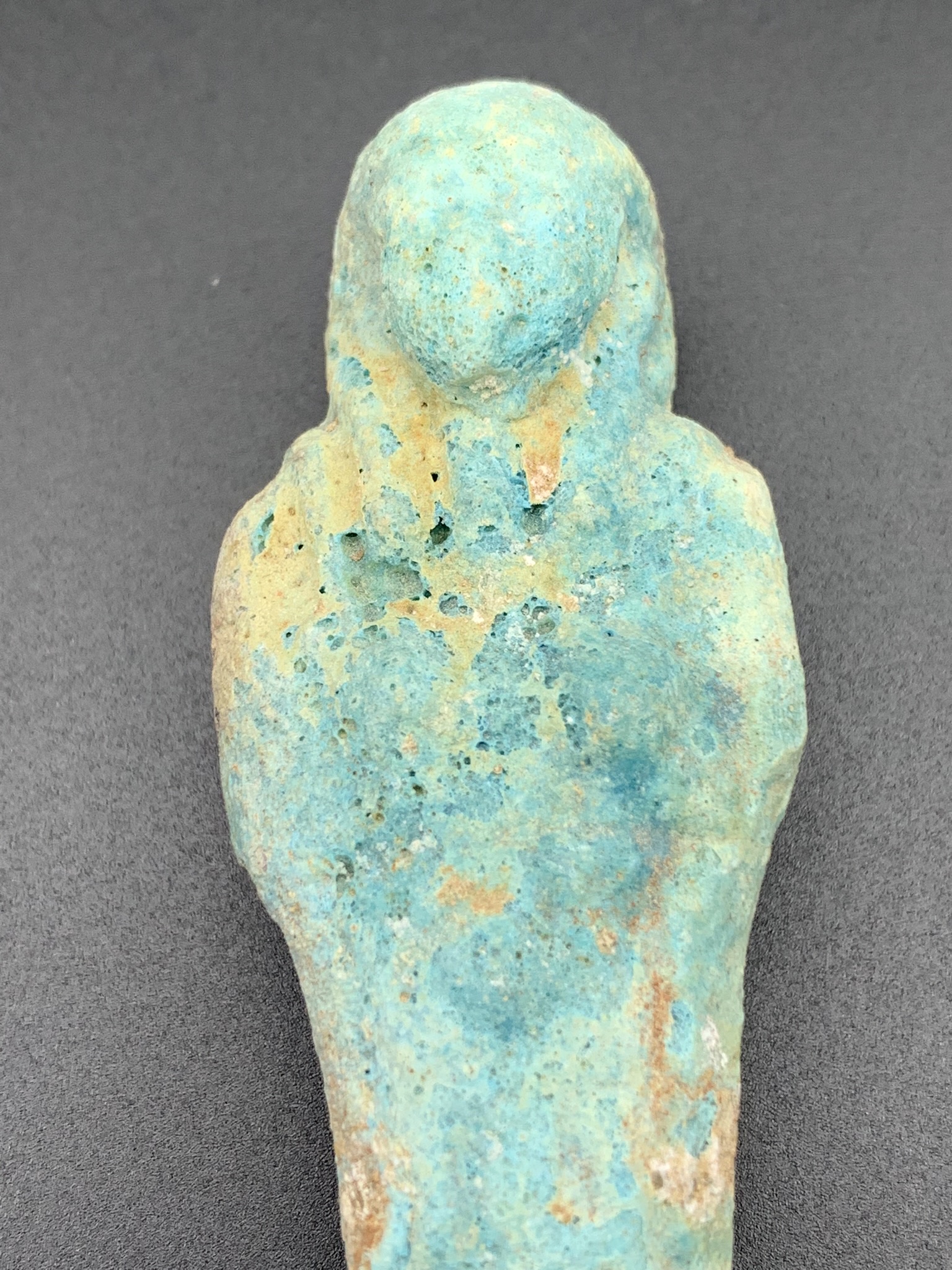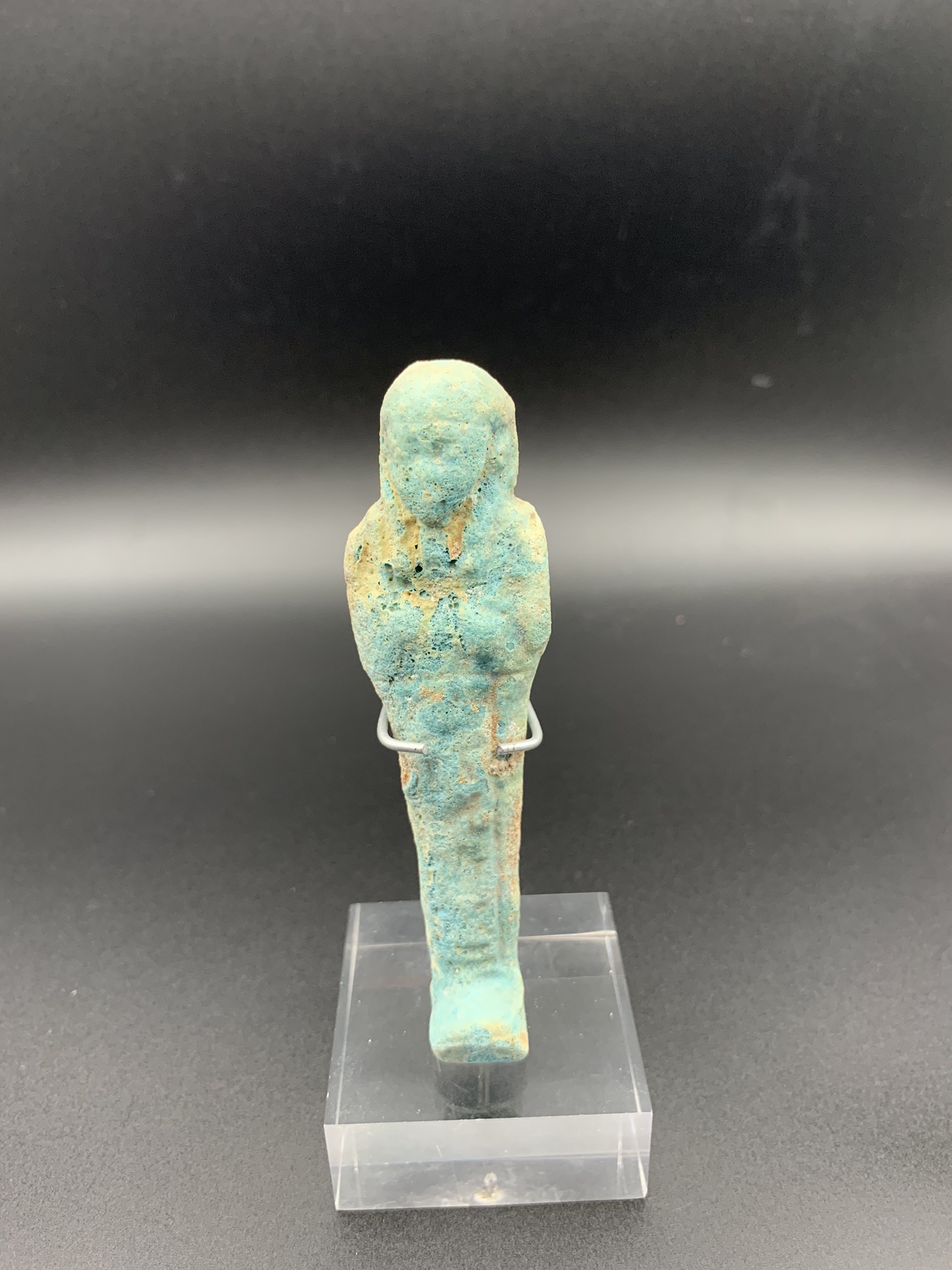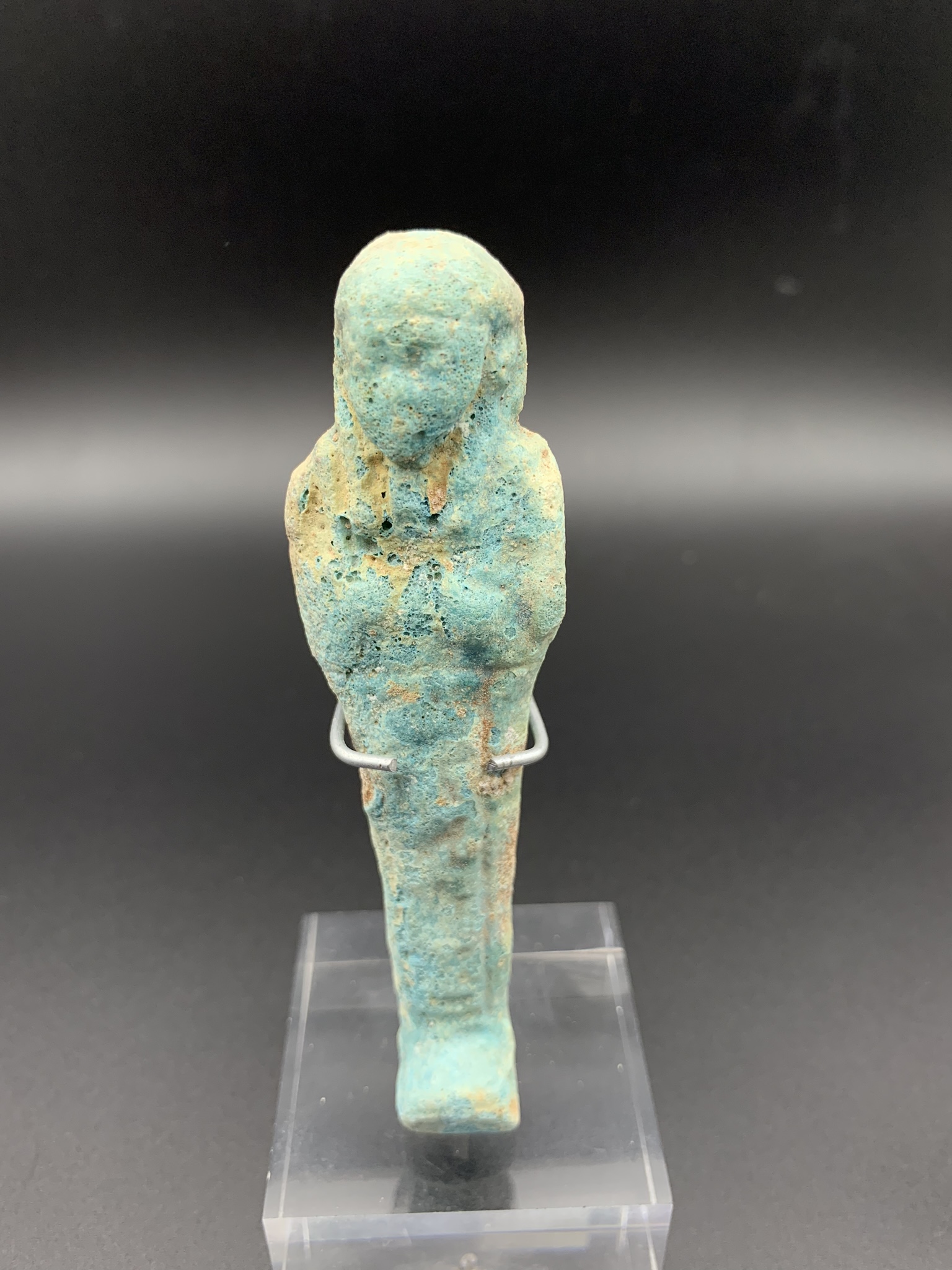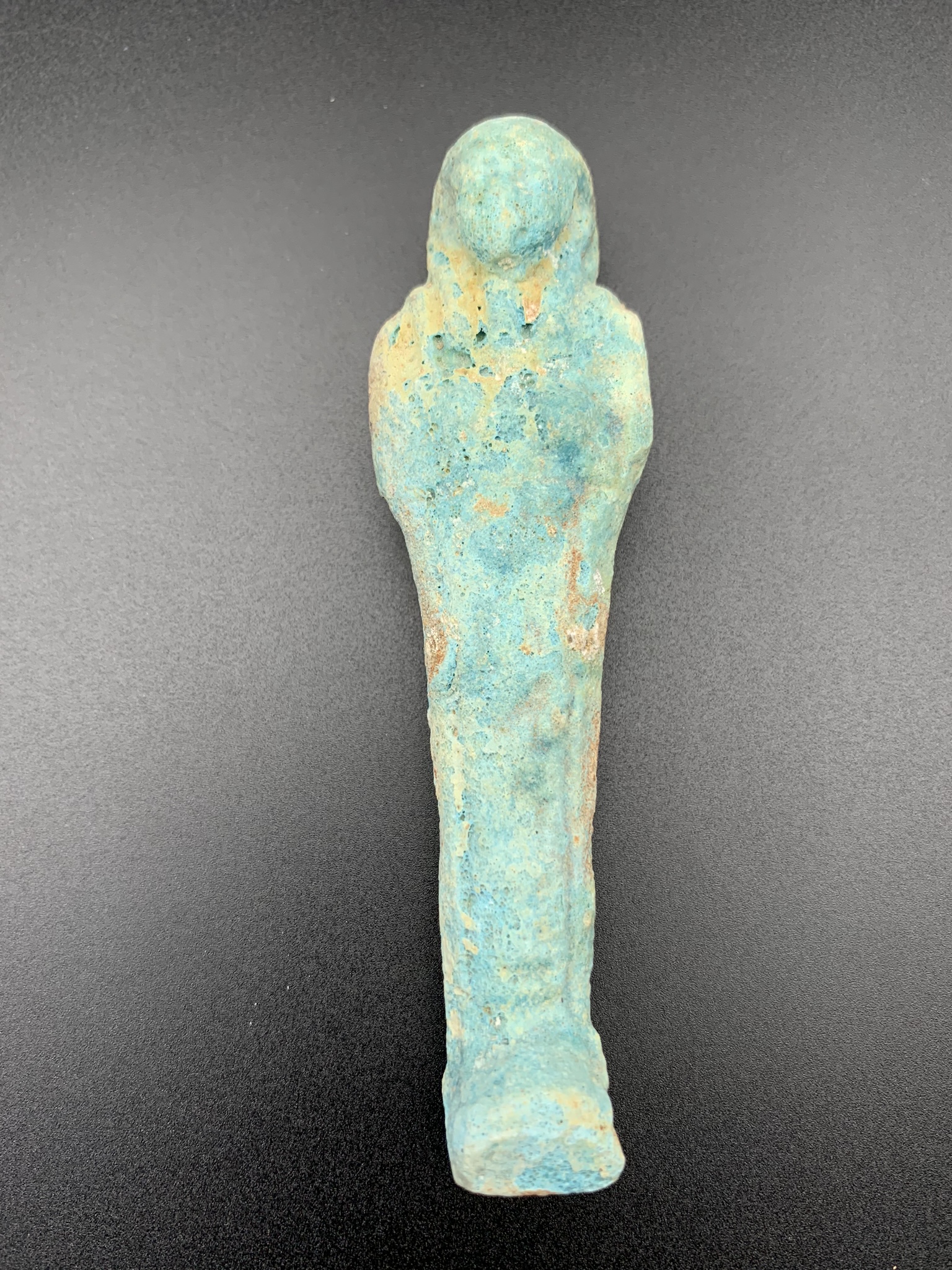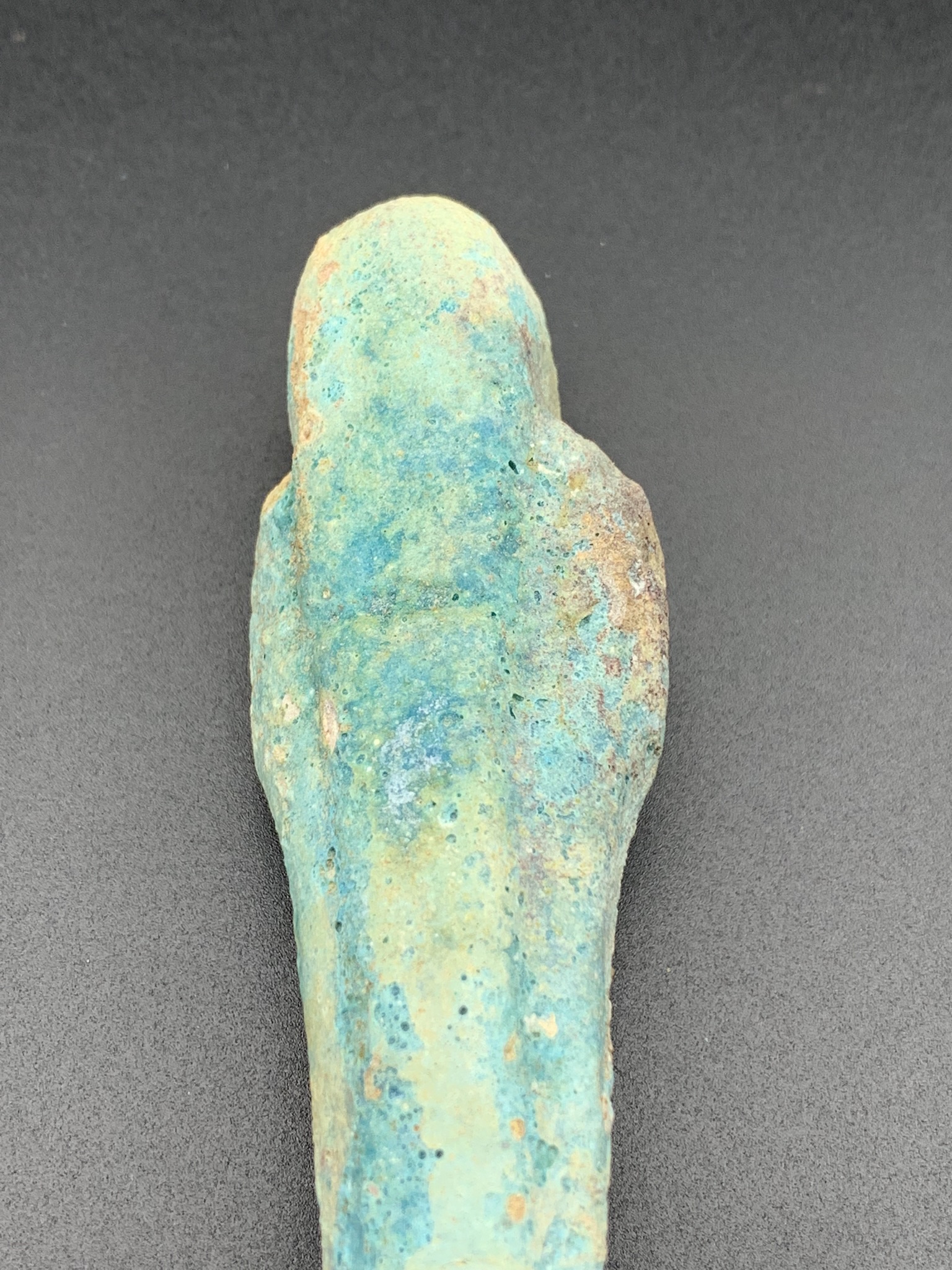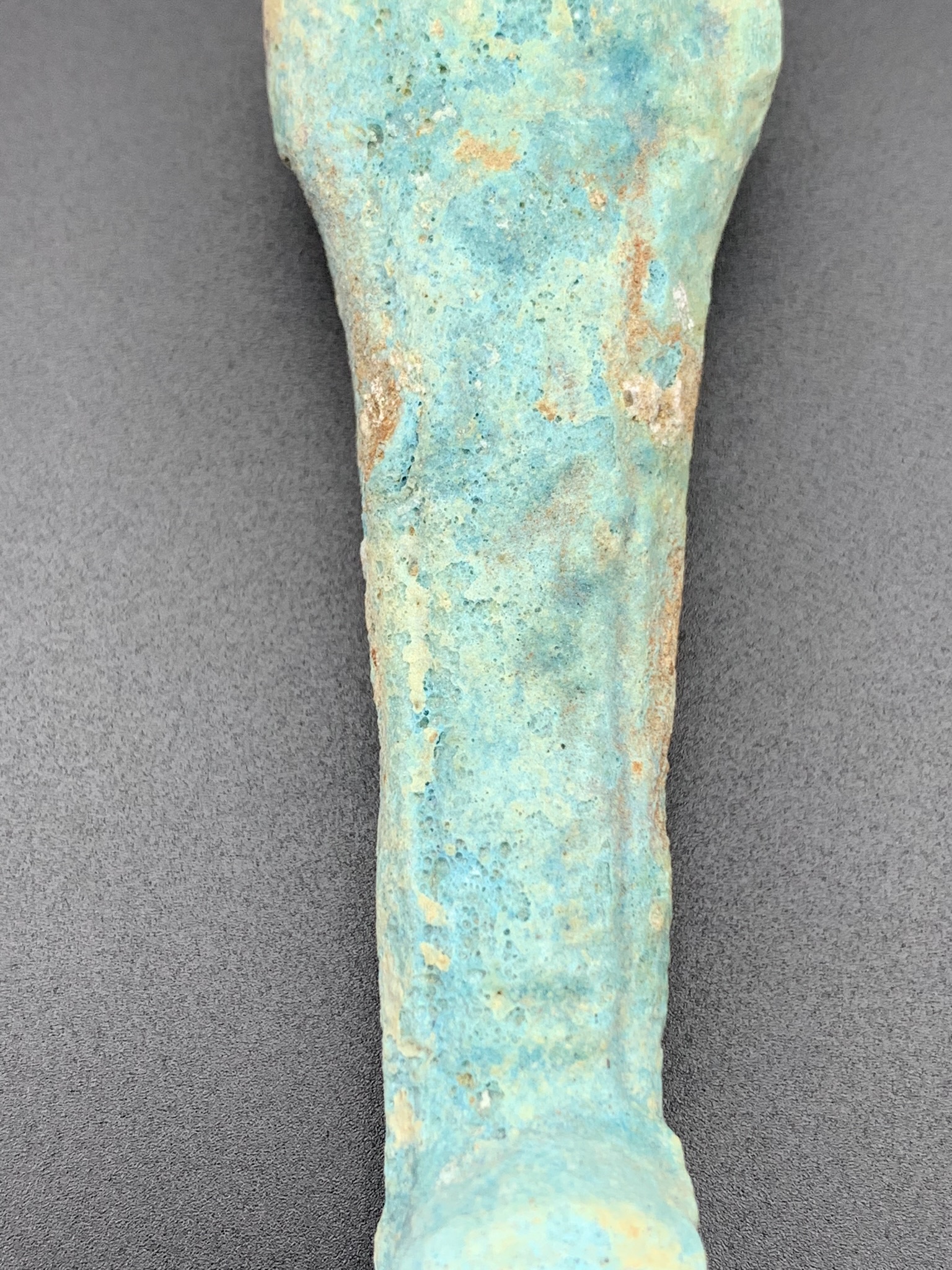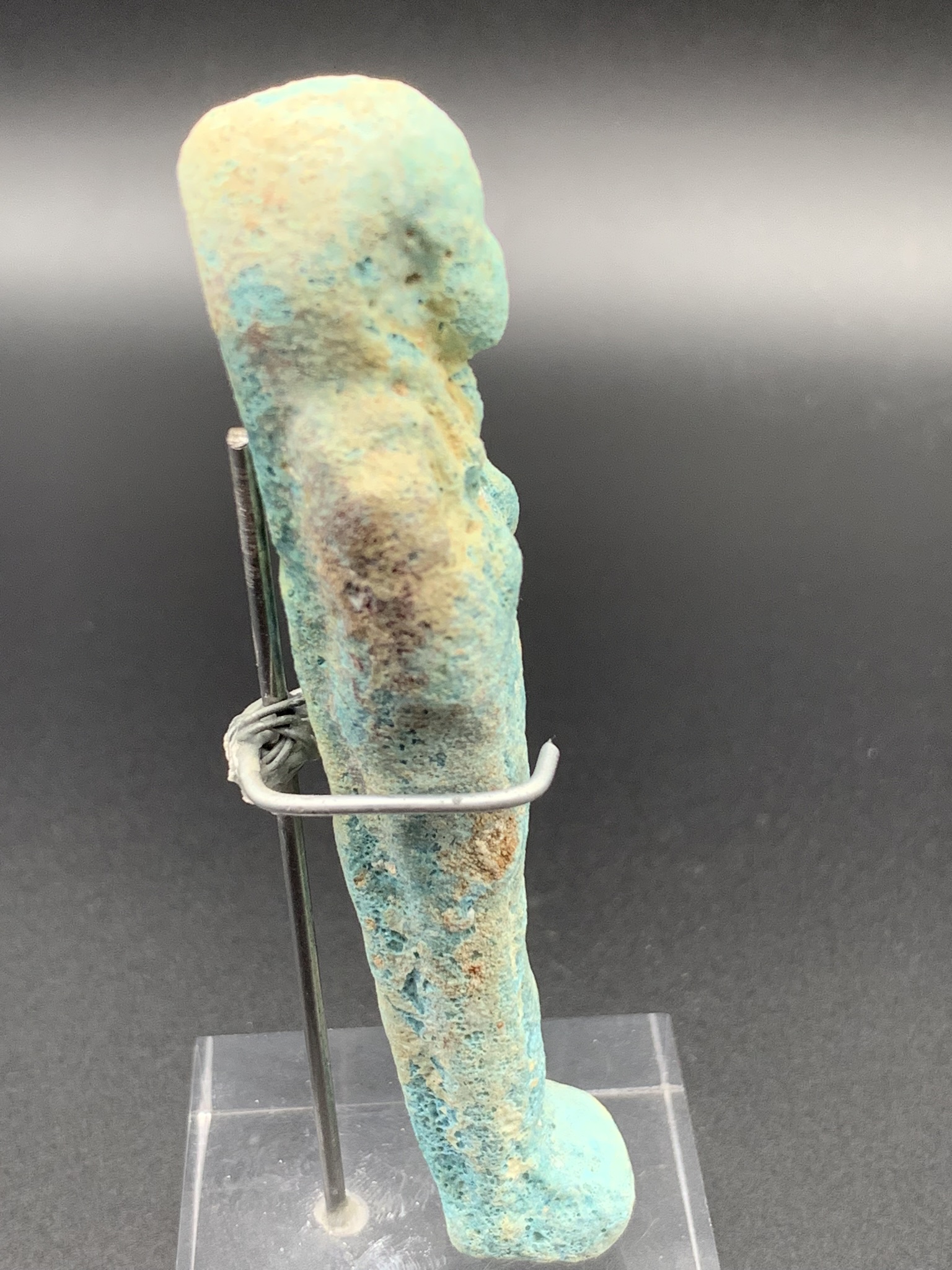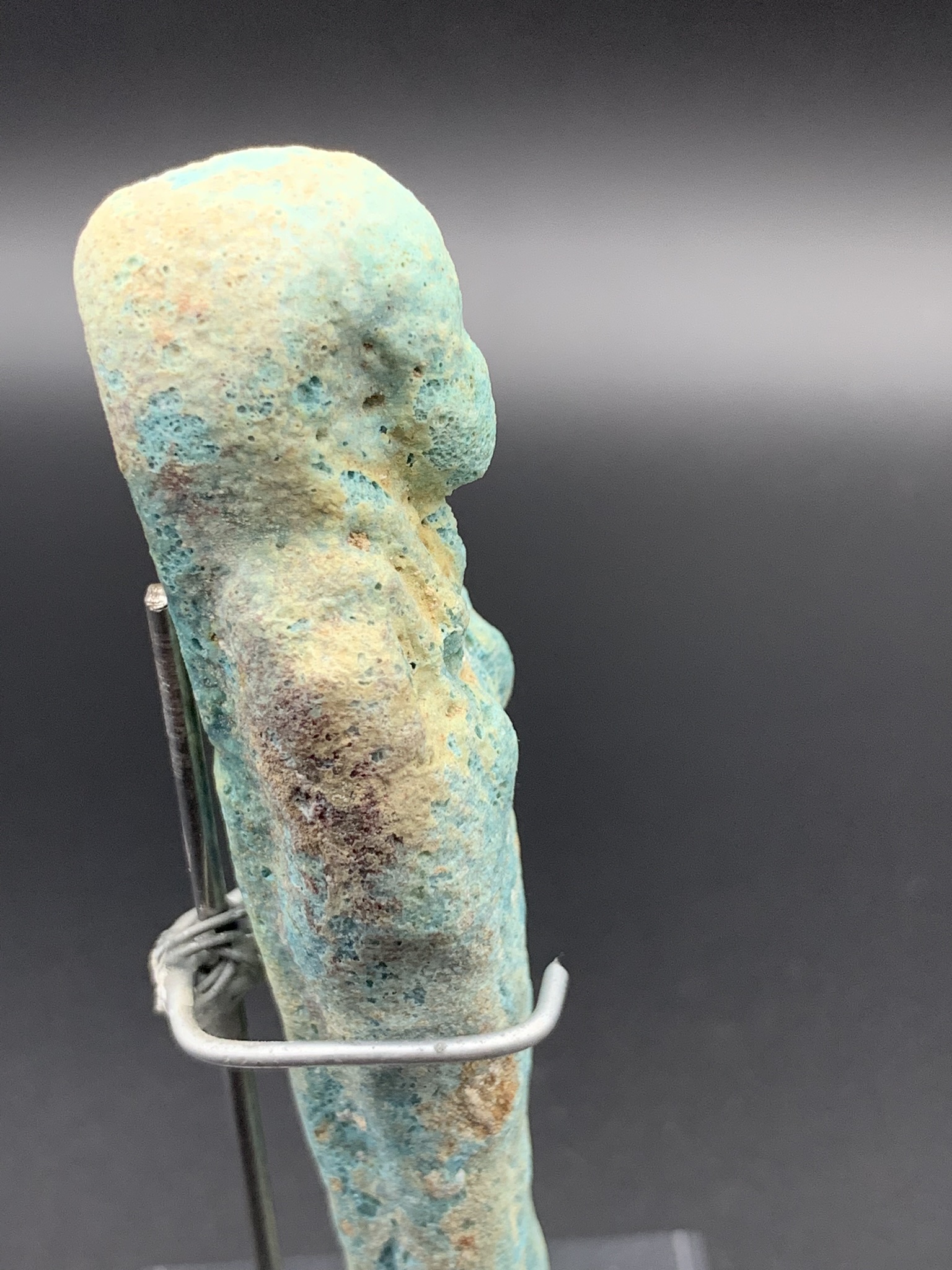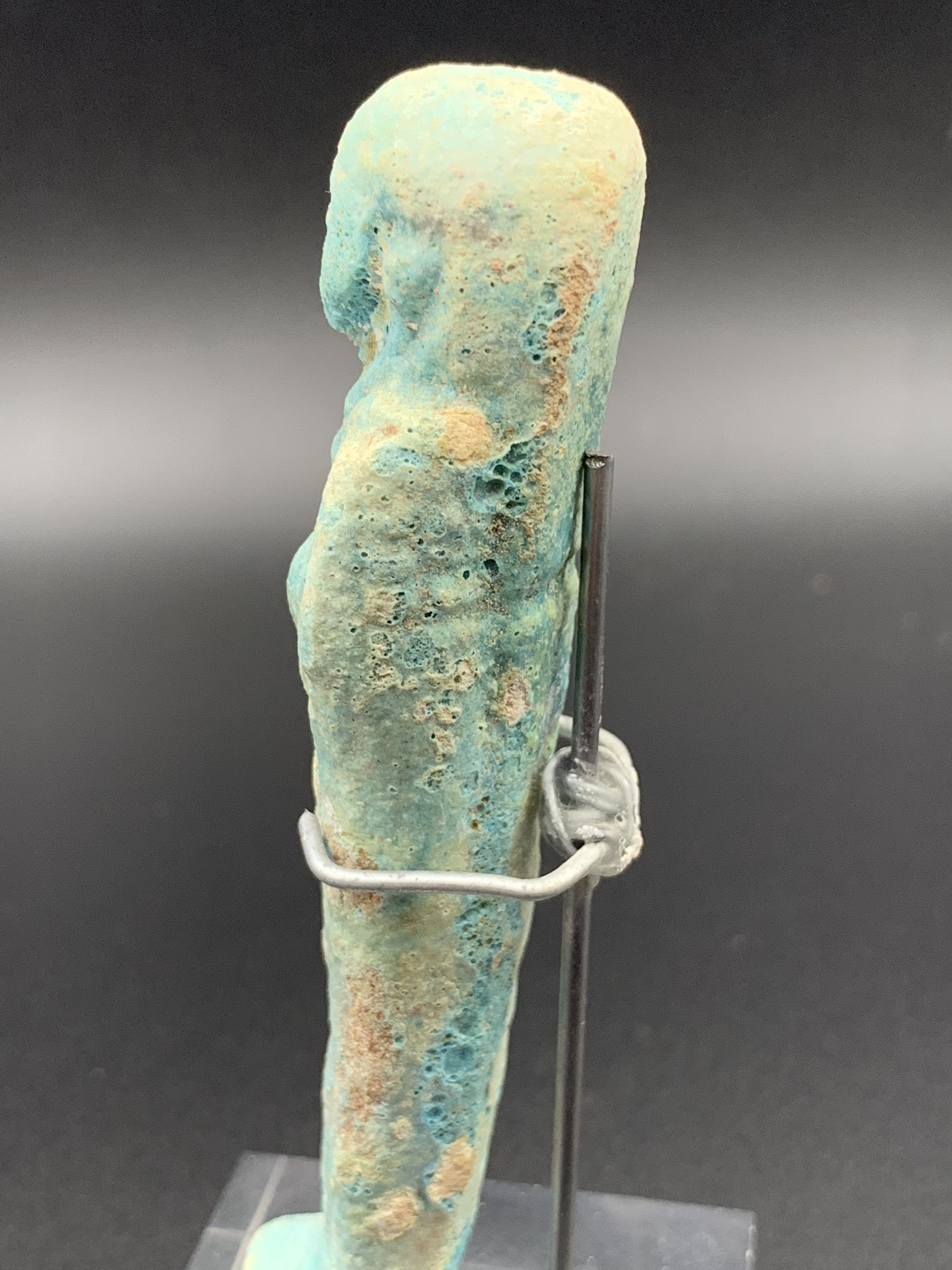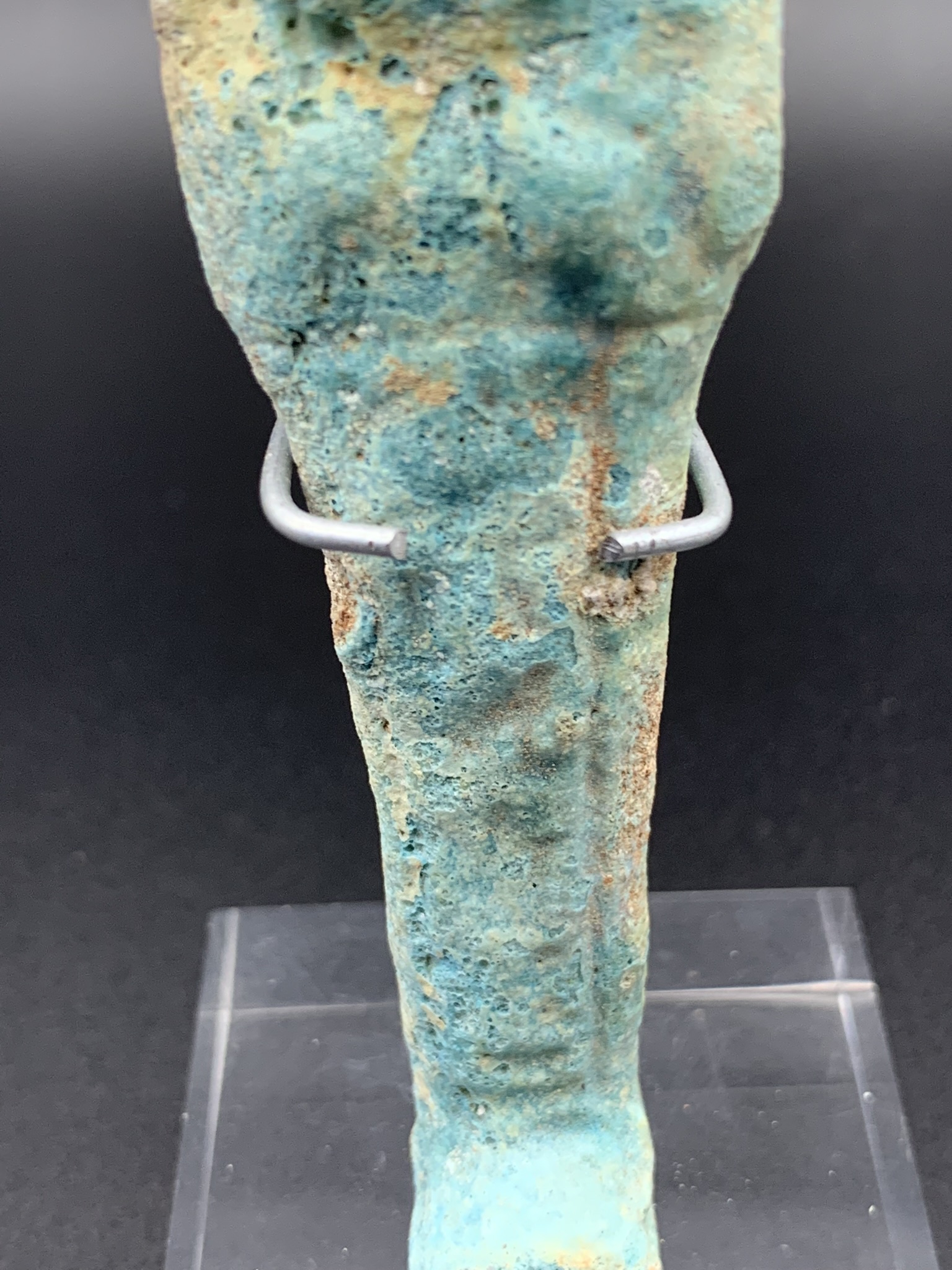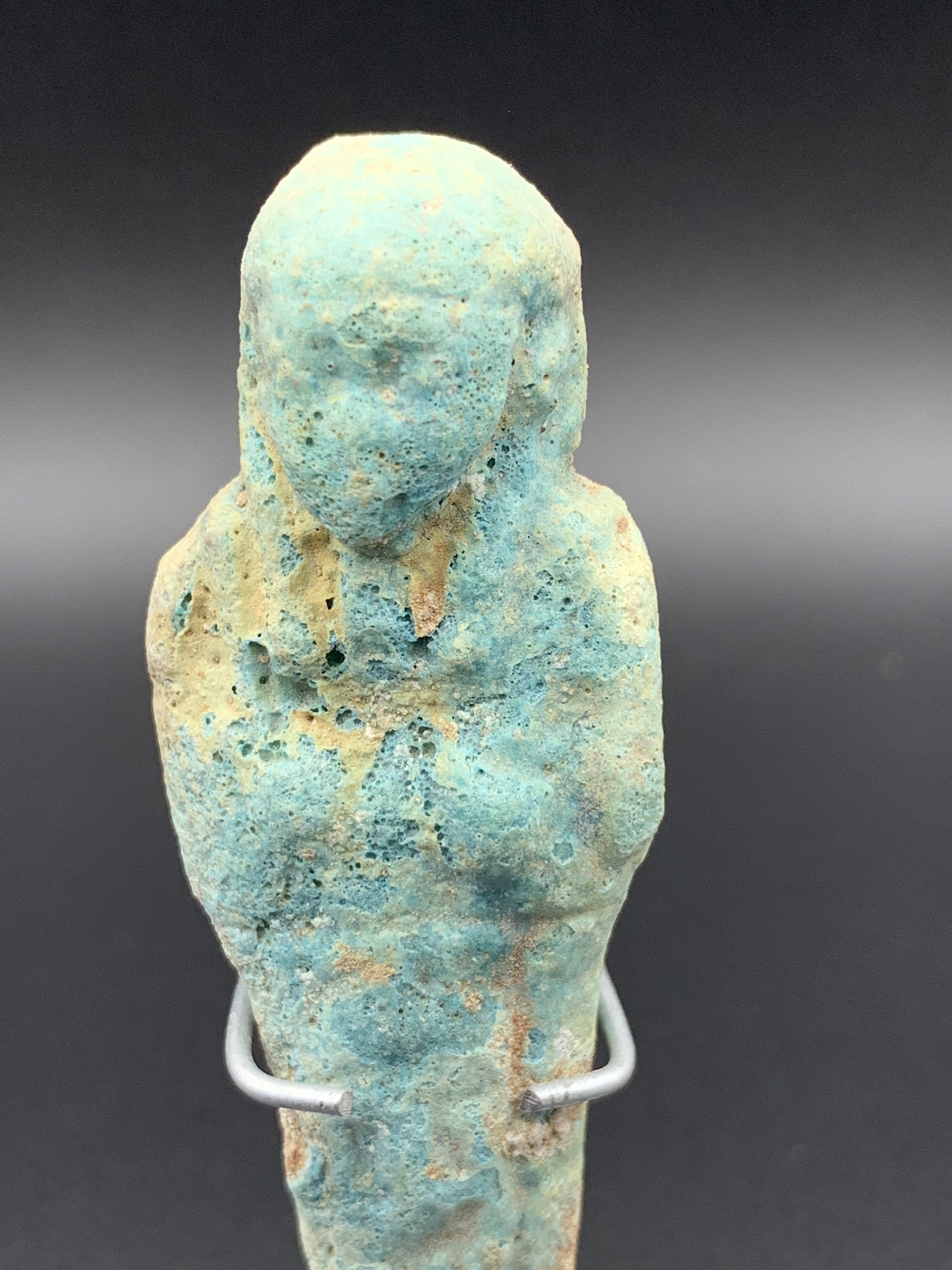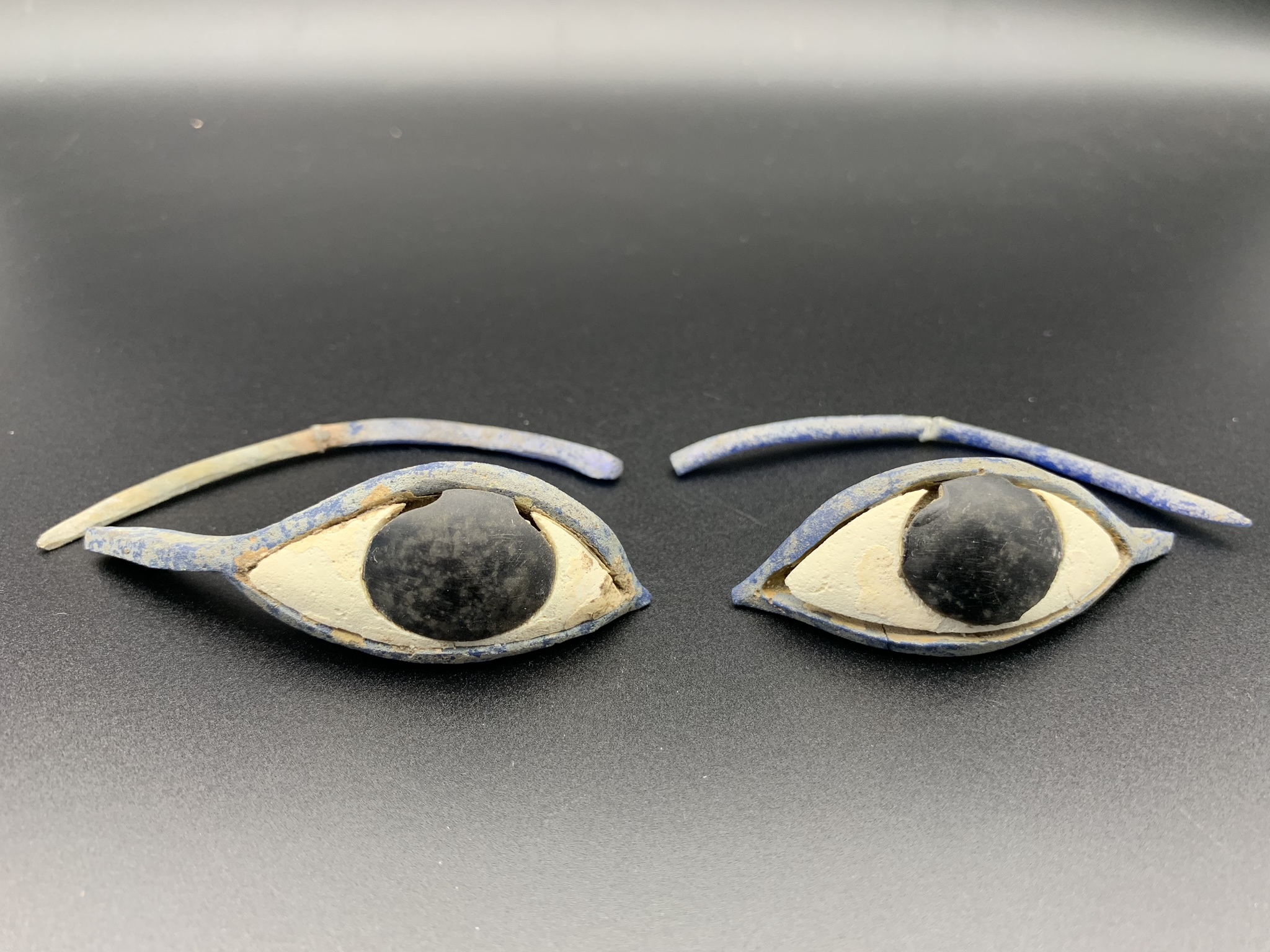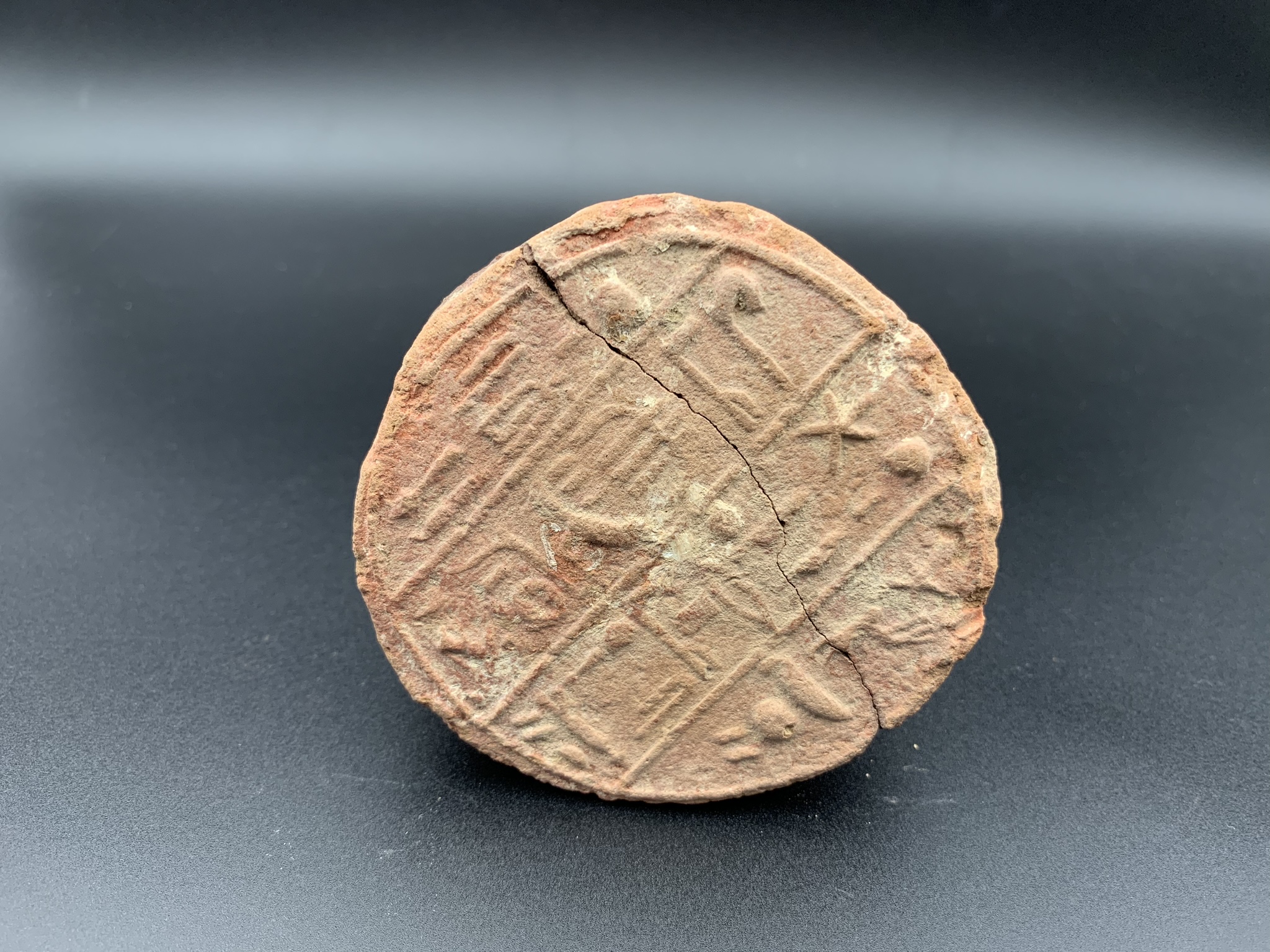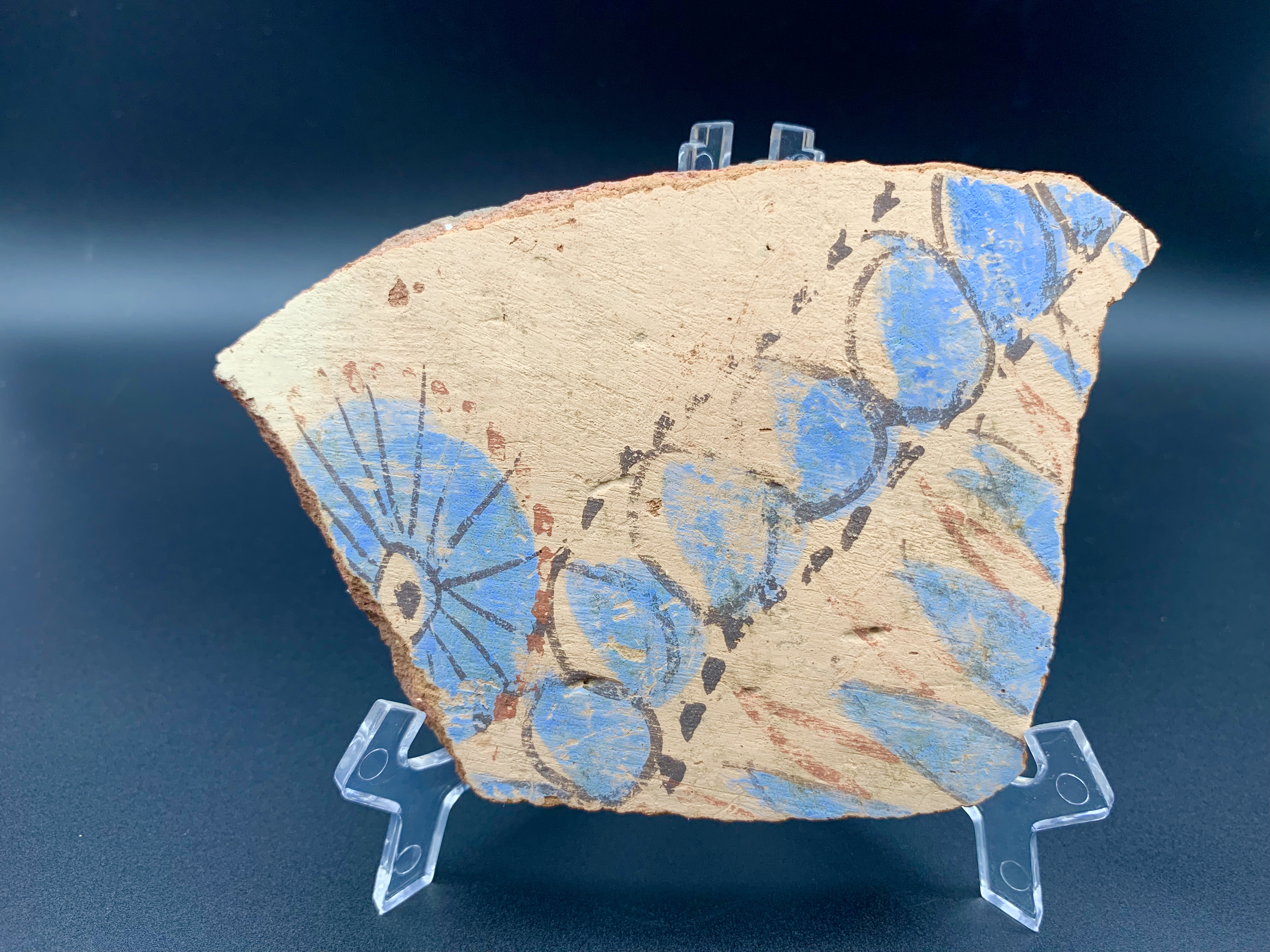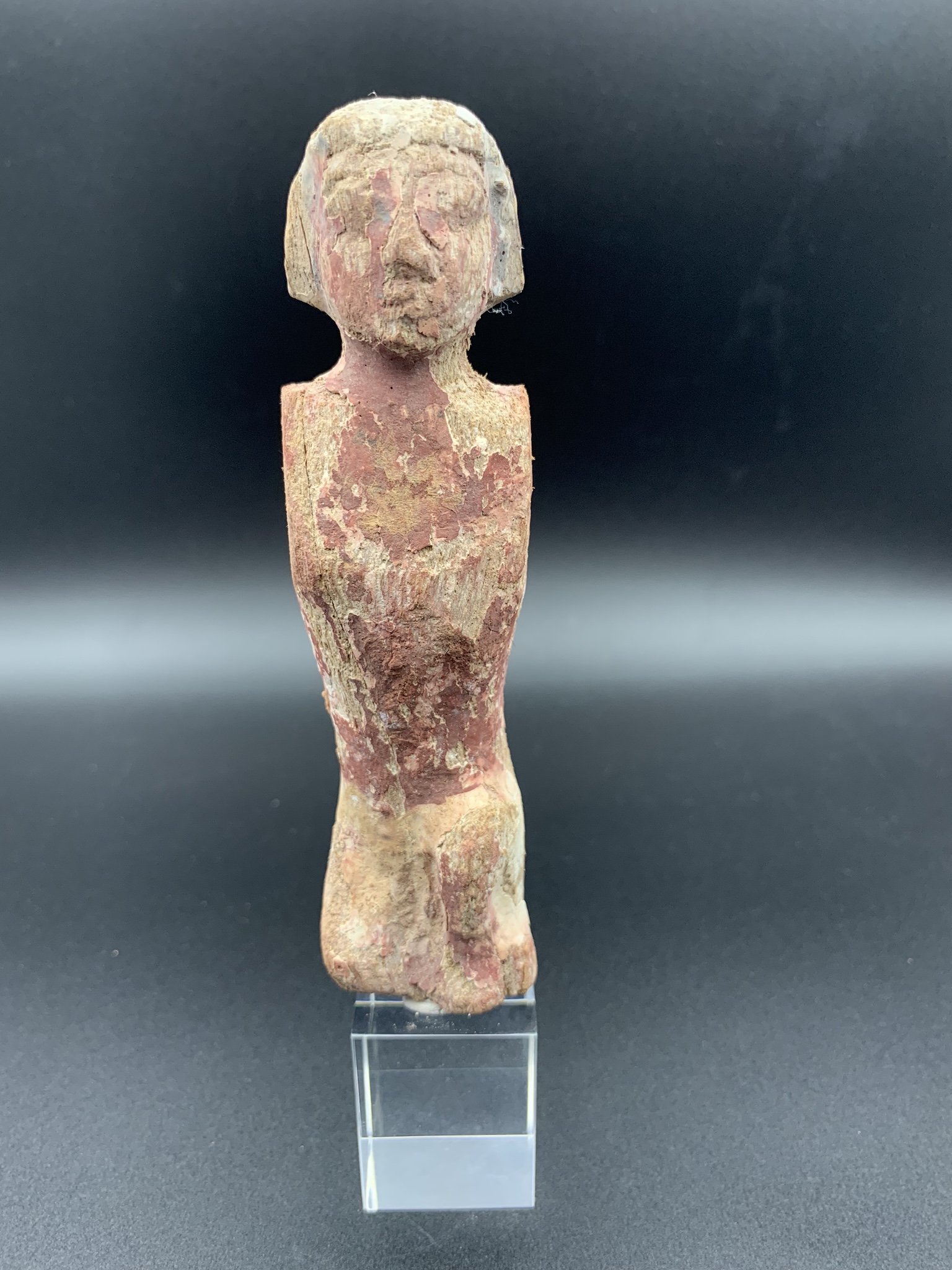Uixebti turquesa de faiança amb jeroglífics. Dinastia XXVI
€72,00
Uixebti turquesa de faiança amb jeroglífics desgastats. Dinastia XXVI
- Procedència: Egipte
- Època: dinastia XXVI
- Tamany: 10,8 cm
- Material: Faiança
- Estat: Desgastat
- Comprat a: EBAY
- Venedor: Relics os the Nile
- Preu: 72 $
- Certificat d’autenticitat: Si
- Data: 08-abr-05
Codi: EGY-00006
Uixebti turquesa de faiança amb jeroglífics desgastats. Dinastia XXVI
- Procedència: Egipte
- Època: dinastia XXVI
- Tamany: 10,8 cm
- Material: Faiança
- Estat: Desgastat
- Comprat a: EBAY
- Venedor: Relics os the Nile
- Preu: 72 $
- Certificat d’autenticitat: Si
- Data: 08-abr-05
Descripció detallada
Antic uixebti egipci amb una caixa vertical de jeroglífics corrent pel centre. El cos està intacte. Els jeroglífics a la part davantera estan en estil vertical i no poden traduir-se pel desgast. Aquest estil era nolt popular en aquest període. El pilar del darrere data de la dinastia XXVI (664-525 a.C.) i està en excel·lents condicions. La peça constitueix un excel·lent exemple de l’artesania egípcia antiga i està en el seu estat original sense restauració. La peça mesura 10,8 cm de llarg.
Més informació
SHABTI:
The ushabti (also called shabti or shawabti, with a number of variant spellings) was a funerary figurine used in ancient Egyptian religion.
Ushabtis were placed in tombs among the grave goods and were intended to act as servants or minions for the deceased, should they be called upon to do manual labor in the afterlife. The figurines frequently carried a hoe on their shoulder and a basket on their backs, implying they were intended to farm for the deceased. They were usually written on by the use of hieroglyphs typically found on the legs.[1][2] They carried inscriptions asserting their readiness to answer the gods’ summons to work.[3]
The practice of using ushabtis originated in the Old Kingdom of Egypt (c. 2600 to 2100 BCE), with the use of life-sized reserve heads made from limestone, which were buried with the mummy.[4] Most ushabtis were of minor size, and many produced in multiples – they sometimes covered the floor around a sarcophagus. Exceptional ushabtis are of larger size, or produced as a one-of-a-kind master work.
Due to the ushabti’s commonness through all Egyptian time periods, and world museums’ desire to represent ancient Egyptian art objects, the ushabti is one of the most commonly represented objects in Egyptology displays. Produced in huge numbers, ushabtis, along with scarabs, are the most numerous of all ancient Egyptian antiquities to survive.


